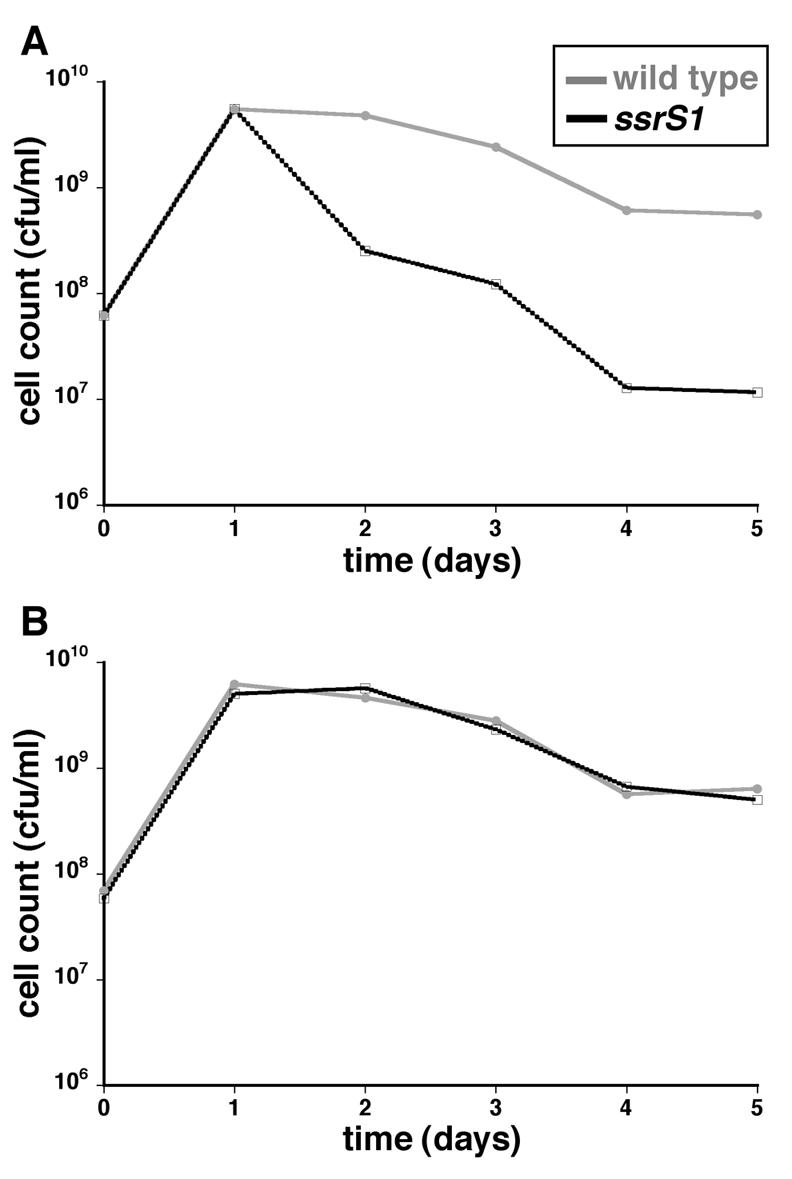FIG. 1.

6S RNA-deficient cells (ssrS1) are at a competitive disadvantage after 2 days of growth in stationary phase. (A) Equal numbers of 6S RNA null cells and wild-type cells were inoculated into LB medium and incubated at 37°C, and viable-cell counts were measured over time by plating. The data presented are averages for five duplicate cultures of KW370 (ssrS1 Nalr) cocultured with ZK1143 (wild type, Strr) and five duplicate cultures of KW371 (ssrS1 Strr) and ZK1142 (wild type, Nalr). Standard deviations were small enough not to be visible on the log scale. (B) 6S RNA-deficient cells and wild-type cells were inoculated into individual cultures (not in competition) and incubated at 37°C, and cell densities were measured over time by plating. The data shown are from a representative experiment containing two duplicates of each cell type: ZK1142, ZK1143, KW370, and KW371.
